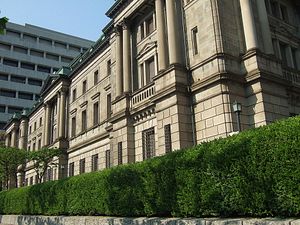Quite a bit of information about the performance and future options of Japan’s program of monetary easing has emerged since this weekend. Bank of Japan (BOJ) Governor Haruhiko Kuroda told the Nikkei Asian Review in an interview published Saturday that with inflation at nearly 1.5 percent, he was confident the central bank would reach its target of 2 percent inflation by fiscal 2015.
Kuroda stated that he thinks the impact on consumer demand from the consumption tax increase will be absorbed by this summer, and that by the third quarter economic growth should resume. If progress continues apace, the government could decide as early as December whether to proceed as planned with a second consumption tax increase to 10 percent next year. Kuroda stressed that the tax increase was not an issue for the central bank to decide, yet it was important for Japan to achieve “a sustainable fiscal structure.”
Kuroda was also quick to point out that the bank would not hesitate to act in order to meet its inflation target should the need arise, saying “we are ready to adjust policy, be it further monetary easing or something else, if changes in economic and financial developments derail the path toward meeting the price target.”
While Kuroda’s comments shaded toward optimism, the recent release of the minutes from an April 30 meeting of the BOJ board shows not all its members share Kuroda’s outlook. According to Reuters, board member Takehiro Sato “proposed changing the central bank’s assessment of prices to say that risks are tilted somewhat to the downside,” showing that not all its members believe the inflation target can be reached within a year.
Sato also called for a change to the wording of the central bank’s price target, to include the possibility that the inflation goal may not be reached by fiscal 2015. The proposal was voted down 8 to 1, with the BOJ firmly maintaining that risks to prices are finely balanced.
Despite Sato’s claim, the Bank of Japan is clearly considering its options in regard to the phasing out of its 60 to 70 trillion yen annual monetary easing. In a separate Reuters article, current and former central bankers familiar with the internal BOJ debate say the current members are already contemplating a possible exit from the program.
However, because of the fragile nature of Japan’s inflationary recovery, and out of fear of sparking volatility and market confusion, “the BOJ has no plans to trim the stimulus or publicly suggest the eventual drawdown any time soon.”
Despite the general trend in opinion among central bank board members to taper the monetary stimulus, should the inflation target be reached, there are other concerns to consider. According to Bloomberg, BOJ Deputy Governor Kikuo Iwata said Monday that an economy “with low real growth rates under mild inflation” is possible if the government fails to deliver on economic reforms, which Prime Minister Shinzo Abe is expected to announce next month.
Iwata said that raising the potential inflation rate beyond 2 percent is something the government has the tools to do, and that the BOJ has “high expectations that the government will continue to make further progress in its growth strategy in order to strengthen the growth potential of Japan’s economy.”
According to Kyodo News, the ruling Liberal Democratic Party’s panel on taxes is likely to approve Abe’s plan to cut the corporate tax rate, provided the tax base is enlarged and new government revenue streams are found. Liberalization of the current tax code is widely seen as a way to stimulate new investment and drive real economic growth.
The Abe government has been intent on driving expectation surrounding its next phase of structural reforms. Aside from reforming the tax code, the government wants to liberalize the investment strategy of the Government Pension Investment Fund, increase the percentage of women in the workforce, and implement National Strategic Special Zones. The latter would further relax regulations surrounding labor laws and agricultural policy, with the intention of then expanding the reforms geographically if they prove successful.
The BOJ meanwhile appears to be hedging its bets on continued inflation, and placing the success of Japan’s economic recovery on the ability of Abe’s new structural reforms to deliver.































